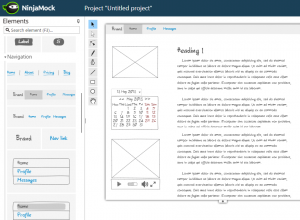As a new dog owner, fending off my puppy’s nips and calming her barks has led to me scouring Google for training tips. In turning these insights into practice with Bailey, I’m reminded of advice I’ve heard for human teams – which has reminded me that good management advice can be applied in many facets of life. Below are three solid management tips with enough staying power to overlap between the dog world and the business world.
1. Positive reinforcement works better than negative attention.
I may be biased, but my puppy is the smartest dog I’ve met. At four months, she was mostly potty trained, knew basic commands like “sit” and “stay,” and could perform party tricks, like “high five” and “jump.” When training a pup, experts recommend rewarding good behavior, such as coming when called or spinning on command, over punishing bad behavior, like biting my new couch. To dogs, your reaction – even if it’s full of scolding – is attention, and they will repeat the behavior if they saw that it was “rewarded” with your attention last time.
In the same way, at work, I’ve noticed that sharing positive feedback when someone does something amazing reinforces that behavior. Giving a shout out to a teammate who got a great media hit or sending a thank-you email to a colleague who helped workshop your latest pitch are good ways to recognize awesomeness and motivate them to keep it up – and doing so publicly will show others that you want to see and develop such exemplary behavior within your team. Of course, bad behavior at work does certainly need to be addressed and unlike dogs, humans are obviously complex and capable of open, two-way conversations about how to overcome negative habits.
2. Repetition builds recall.
Training my puppy has been a test of my patience. We go through lots of exercises together to help her remember the skills she has learned. It would’ve been miraculous if Bailey went into her crate the first time we told her to. Instead, we had to give the command, physically guide her to the crate door and entice her to go in with a treat. Once she went in, we rewarded her with the treat and some chin scratches. Then, we did it again. And again. And again. Now, Bailey understands how to go to her crate when told without any other guidance from me.
When I’m training team members at work on different skills, I also don’t expect them to get it on the first try. If they do—great! But if not, we talk through the steps again. We might do some shadowing where they watch me put together the report, or in reverse, I sit with them as they do the task and I observe their process and offer tips. Either way, it’s the hands-on experience and doing it multiple times that helps lock in understanding of the process.
3. Respect trumps everything.
While it’s important to me that my puppy likes me, at this stage, it’s more important that she respects me and follows my lead. So, even though I hate when Bailey gets angry and bites me when I don’t let her eat acorns, mulch and random garbage during our walks, I keep in mind that her training is for her own good. I’m earning her respect and I know eventually, I’ll win her affections and snuggles.
At work, while I’d love for all my teammates to like me and be my best friends, respect is more important – and it’s a two-way street. It’s more critical that we are able to work together and share opinions, even differing ones, than it is for us to brunch together every weekend. However, I am lucky enough to work in an environment where I genuinely respect and like my colleagues.
Got a great management tip – or piece of pet training advice? We’d love to hear it.
Business & Finance Articles on Business 2 Community(25)






